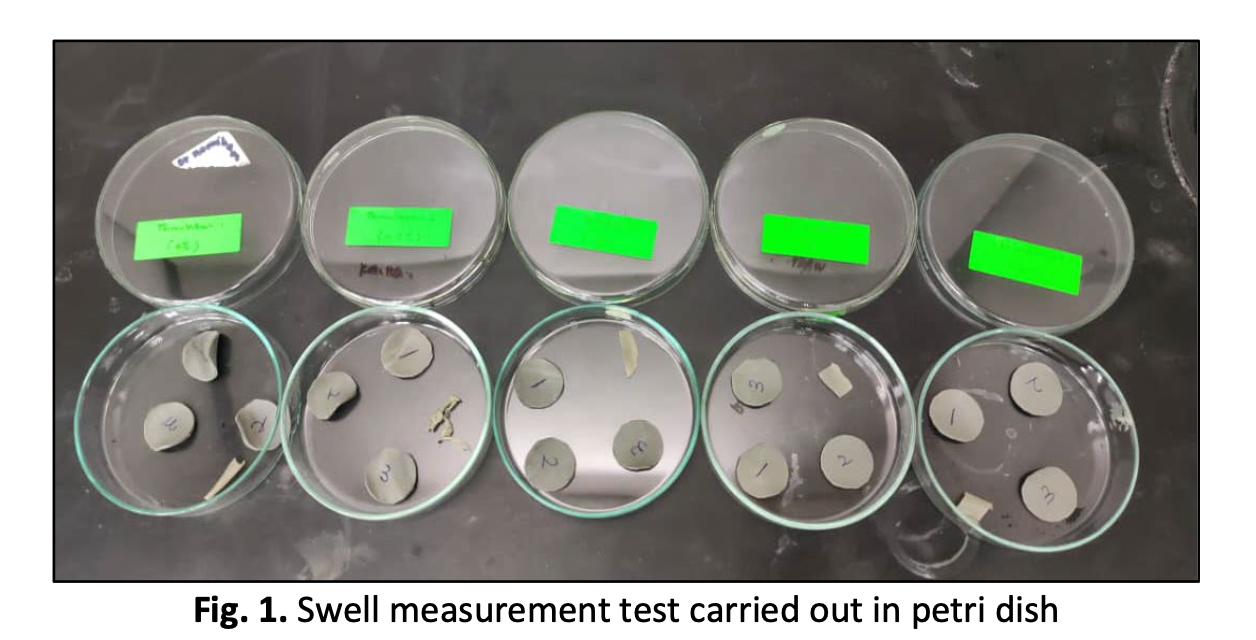Crosslink Density and Toluene Sorption of Tin Dioxide Reinforced Deproteinized Natural Rubber Nanocomposites
DOI:
https://doi.org/10.37934/aram.111.1.103119Keywords:
Natural Rubber Nanocomposites, Tin Dioxide, Crosslink Density, Swell Behavior, Toluene SorptionAbstract
Nowadays, the industry is looking for polymer-based electrical insulators made of greener materials that are more environmentally friendly than existing insulators. In this study, green material of deproteinized natural rubber (DPNR) nanocomposites reinforced with tin dioxide (SnO₂) nanoparticle loadings of 0%, 0.5%, 1%, 3%, and 7% wt% were prepared using melt compounding and vulcanized through sulfur curing. Mechanical properties of DPNR/SnO₂ nanocomposites were evaluated using the tensile test per ASTM D412. The swelling measurement testing was carried out in toluene as a solvent to measure the toluene uptake, swelling rate, sorption coefficient, diffusion coefficient, and permeability coefficient of the DPNR/SnO₂ nanocomposites. The XRD, FTIR, SEM and OM analyses support the results. The nanocomposites' crosslink behavior varied with the variation of SnO₂ nanoparticles in the nanocomposite. The tensile strength of more than 25 MPa was observed at the crosslink density of 1.101 to 1.270 x 10-4 mol/cm3. Therefore, this research proved the efficient range of the DPNR/SnO₂ nanocomposites, corresponding with 1 to 3 wt% of tin dioxide filler loadings in the DPNR matrix. The findings of this study would bring benefits to the electrical industry with the development of green materials for electrical insulation.
Downloads


























